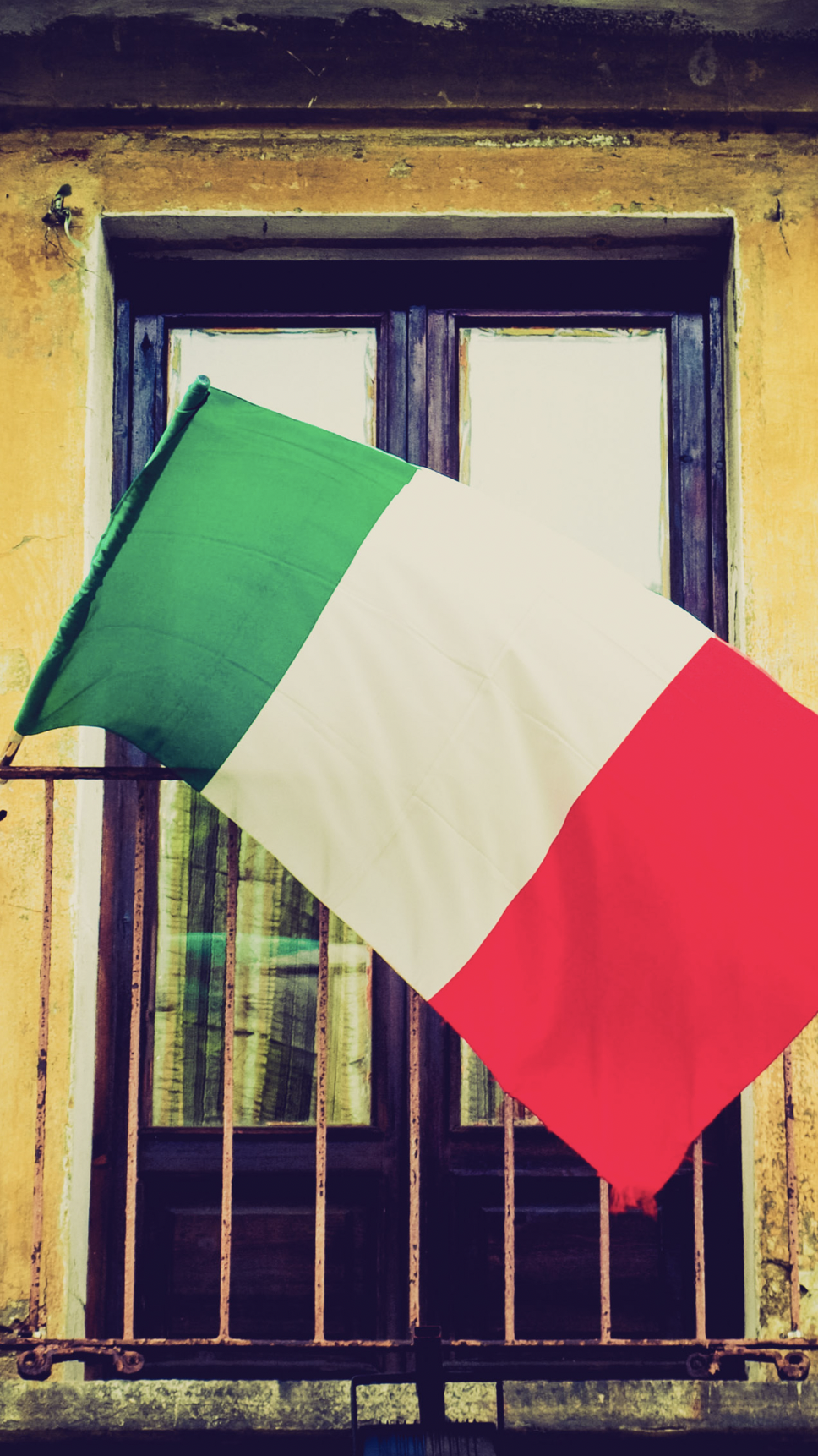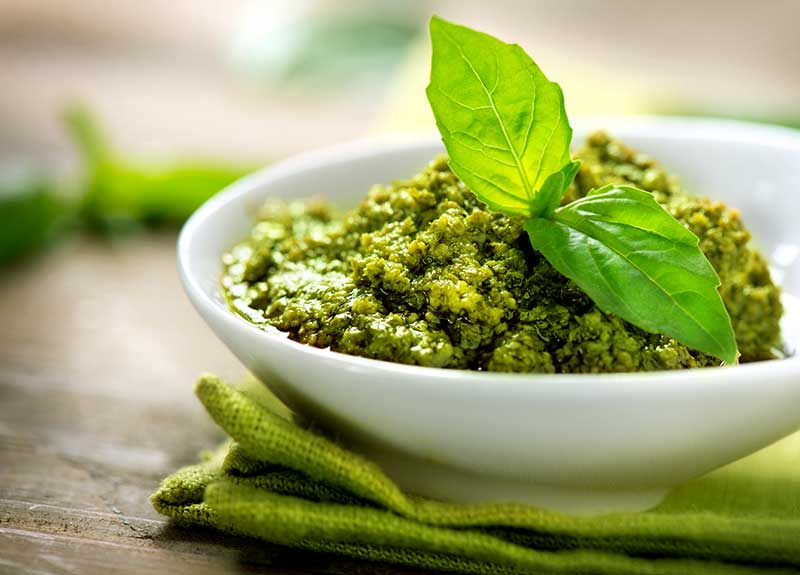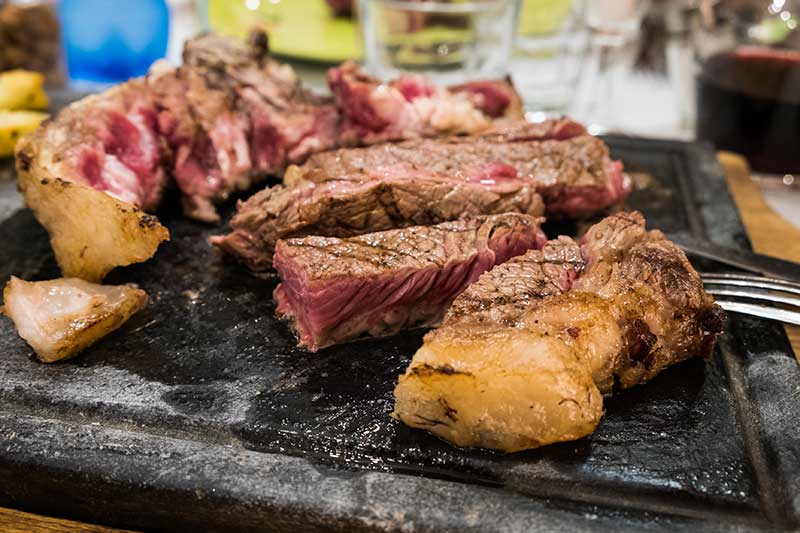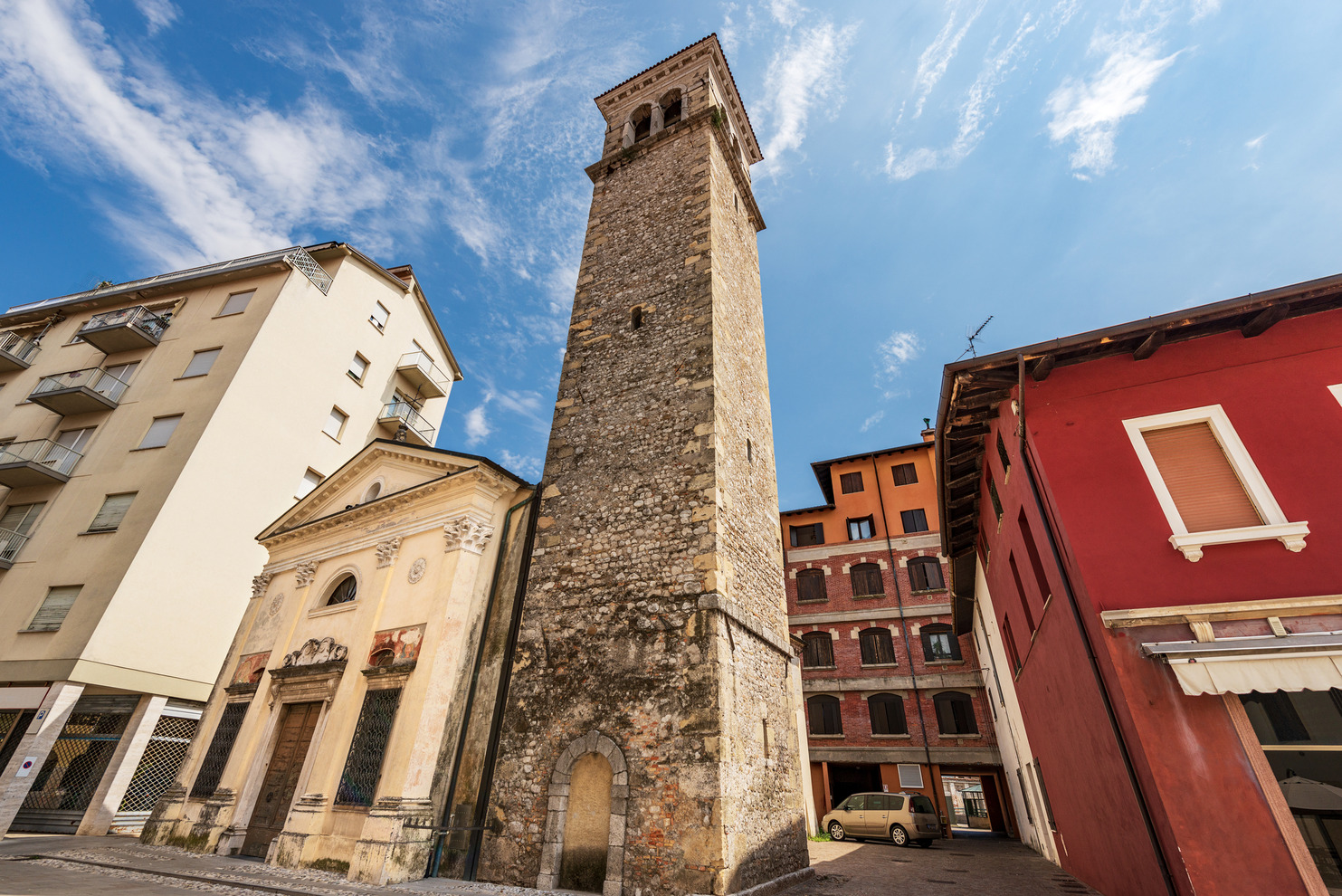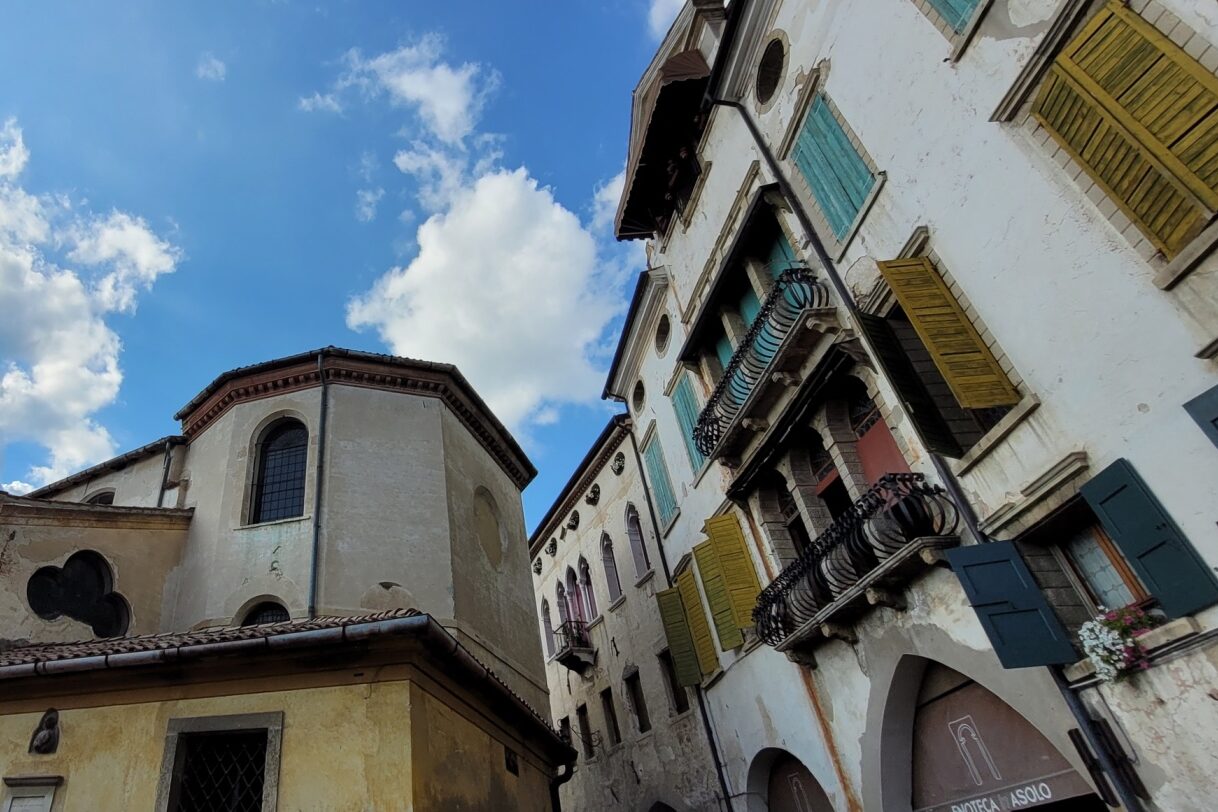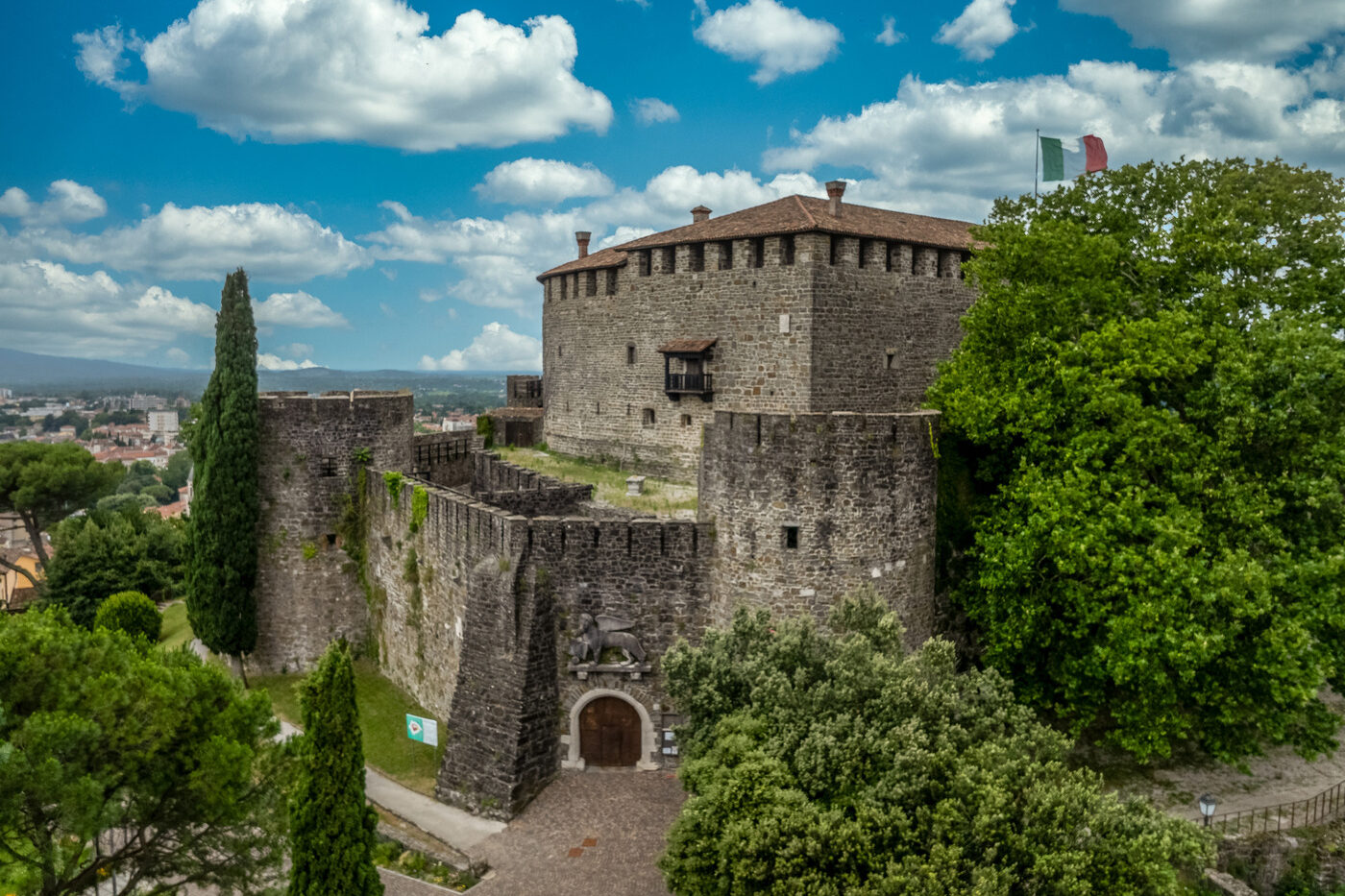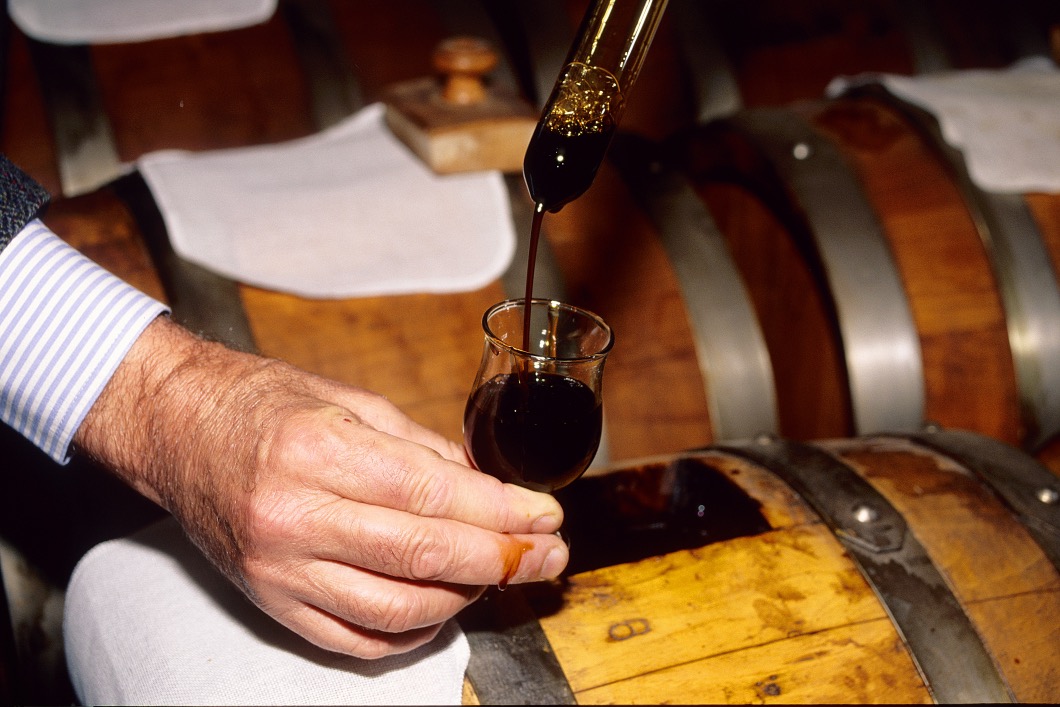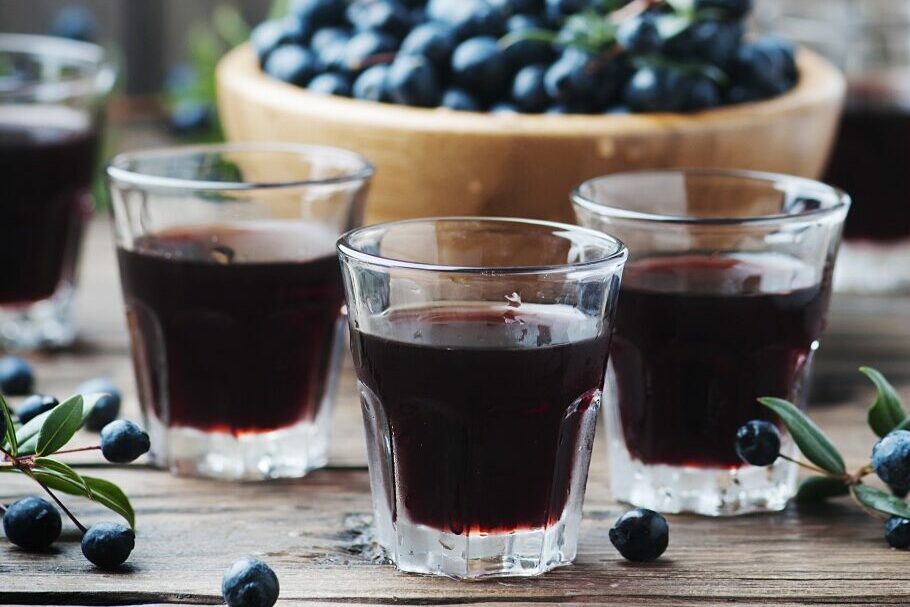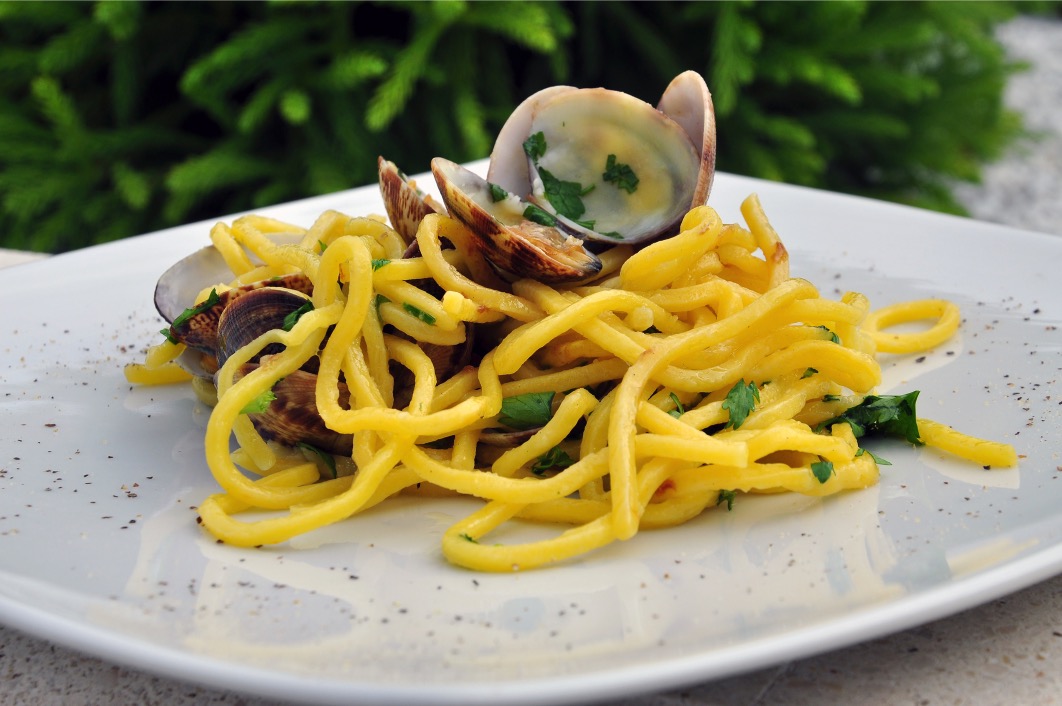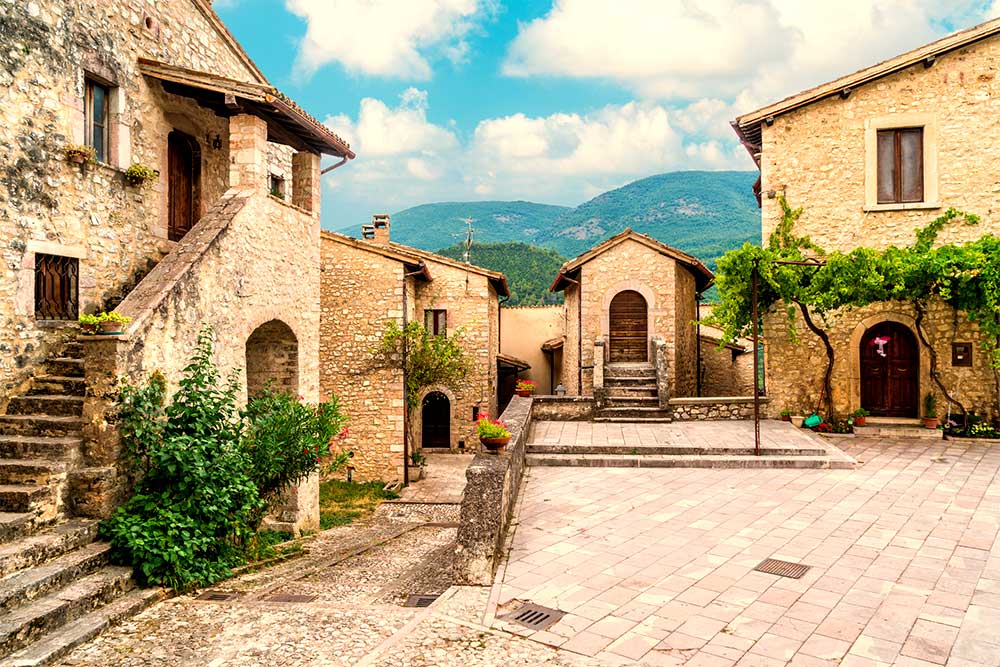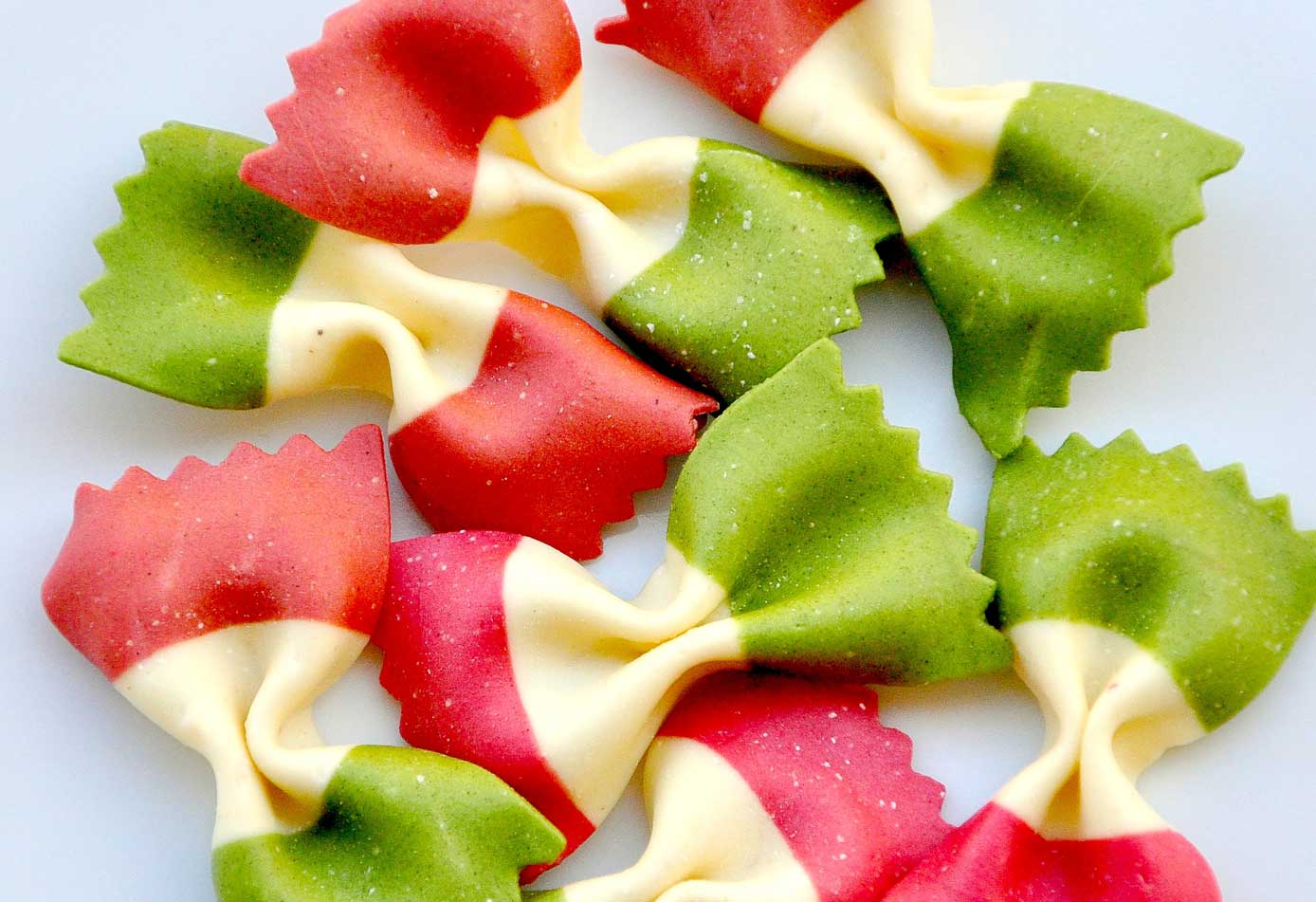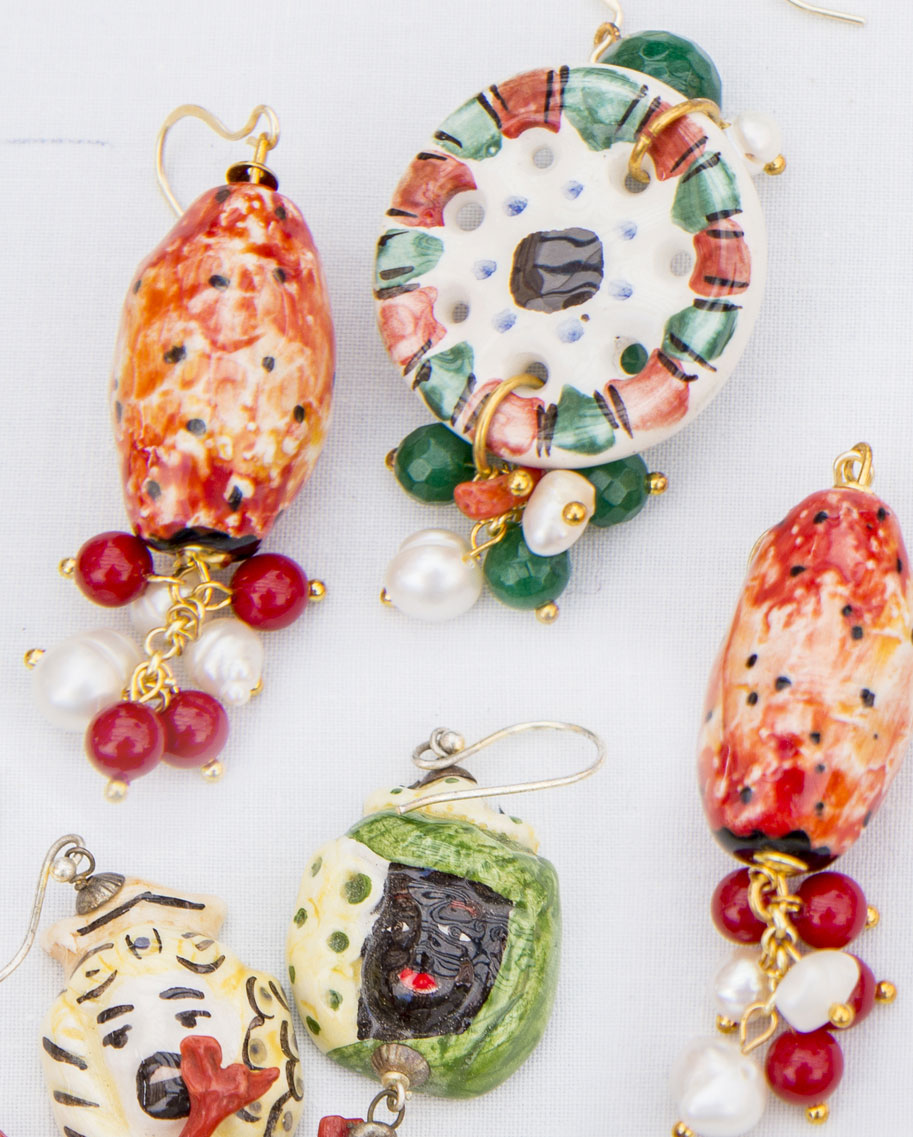Up to 1963 the proud region of Abruzzo was not a region in its own right, but cohabited with Molise, even if Frederick of Swabia had already, in 1233, created the Giustiziere d’Abruzzo, identifying the region’s territory.
Abruzzo became then part of the Bourbons’ kingdom, under the rule of which it remained until, not without fighting, it was eventually annexed to the Kingdom of Italy. In those years, the phenomenon of brigantaggio, criminal venture in support of the Bourbons, became particularly strong.
Geographically, Abruzzo is located at the very centre of Italy, but culturally it is a typical southern region.
To be fair, we could define Abruzzo a National Park, considering it hosts 36% of Europe’s protected areas, along with 23 of the Borghi più Belli d’Italia (Italy’s Most Beautiful Villages) thanks to its many castles, rocks, abbeys, convents, monasteries, sanctuaries, hermitages and archaeological sites.

Festival of eagle in Abruzzo in particular there is a man with golden eagle in the hand, Calascio, Abruzzo © Elisa Bistocchi | Dreamstime.com
The natural paths of transhumance, the so called tratturi, were crucial for the sustenance of the Samnites and have been characteristic of the region’s landscape since the 6th century AC. They were regulated starting in the 2nd century AD by the Romans, who imposed passage tolls on them. In the past 20 years, a project called Le Vie del Tratturo has been working to bring back into use these ancient roads.

Singers and musicians in traditional dress performs popular italian music and songs during the town feast Il Dono on September 8, 2015 in Lanciano, Abruzzo © Ermess | Dreamstime.com
Between 1860 and the end of the Second World War, about 1.3 million Abruzzesi migrated to North America and Australia, but during the previous centuries, Abruzzo had been itself a land of immigrants: starting in the 16th century people from Serbia, Croatia and Albania had settled in the areas of Terni and Pescara. Of them today, only some linguistic vestiges in the dialect spoken at Villa Badessa and the Orthodox rite remain.
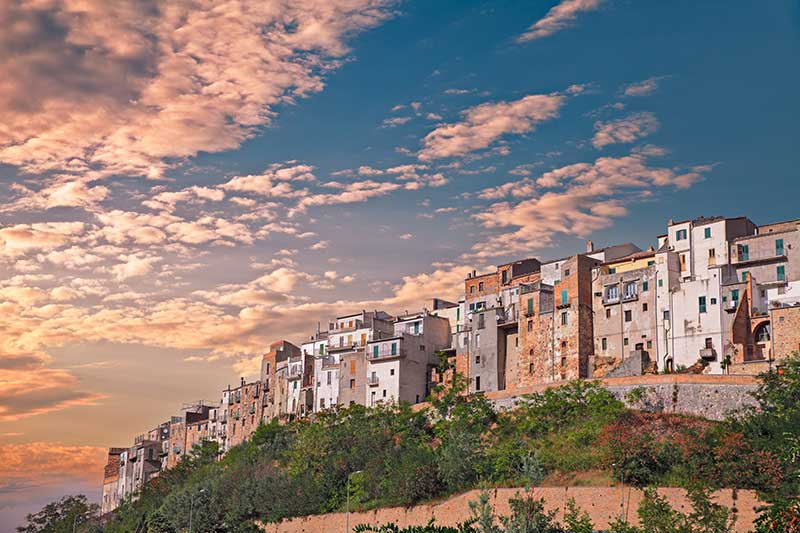
Landscape at sunset under a dramatic cloudy sky of the italian old town on the hill Atessa © Ermess | Dreamstime.com
Its peculiar geographic conformation, mountain peaks that turn into hills to meet the sea, means that there is a variety of micro-climates within a relatively small area. This characteristic influenced Abruzzo’s economy and, of course, also its food!
Even if neither the territory, nor the soil are particularly favorable, agriculture remains an important activity, so much so Abruzzo is home to plenty IGP, DOP and PAT denominations. Among its typical produce we can find Aquila’s saffron, Fucino’s potato, Sulmona’s red garlic and Abruzzo’s spelt.
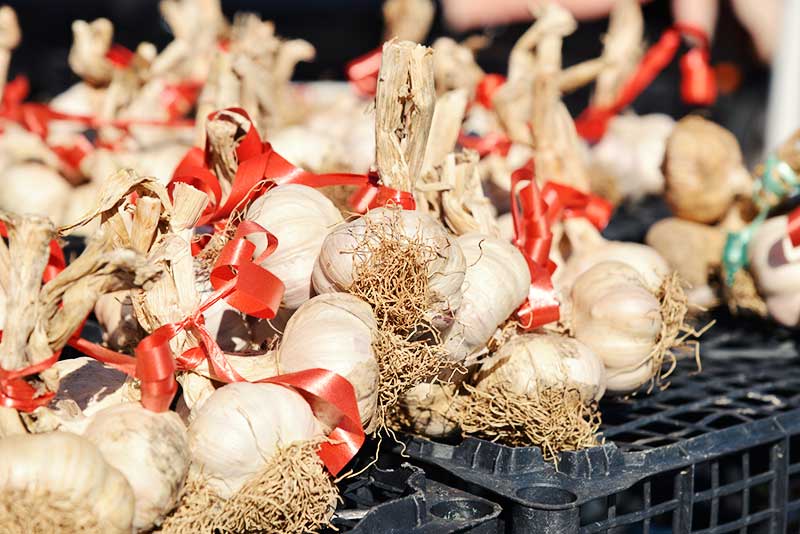
Bunches of Italian red garlic of Sulmona © Streetprince | Dreamstime.com
Sulmona’s red garlic is a rare and precious variety that has been cultivated for centuries only in the Conca Peligna area near Sulmona. It is known for its medical properties, but also for its intense flavor and the fact it lasts longer than regular garlic. It is perfect with both land’s staples such as potatoes and spaghetti, and sea flavors such as prans.
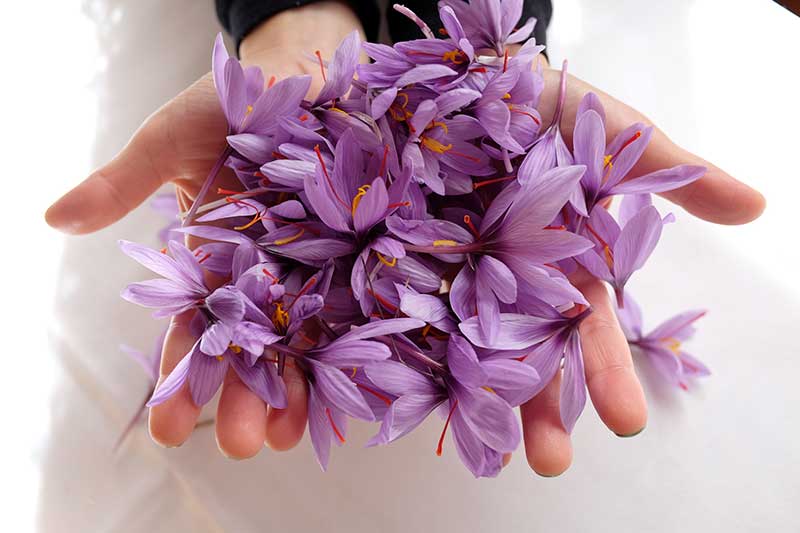
Saffron flowers production in abruzzo © Roberto Pangiarella | Dreamstime.com
Another excellence of Abruzzo and, more specifically, of L’Aquila, is saffron. The zafferano dell’Aquila, which holds a protected origin denomination since 2005, comes exclusively from the Navelli plateau and is considered the best saffron in the world, both for the beauty and the length of its stigmata and for its stronger aroma, brought by the high levels of safranal. The production of 2 pounds of Aquila’s saffron needs 200.000 flowers and about 500 hours of work!
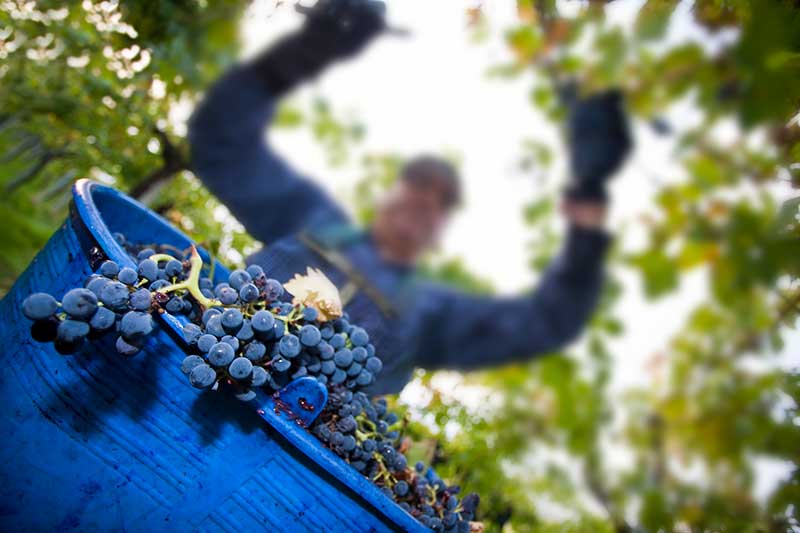
Winemaking tradition is also very important: we only need to mention Montepulciano d’Abruzzo, Trebbiano d’Abruzzo and Pecorino to give an idea.
Abruzzo’s cuisine is incredibly varied and, because of the relative isolation of the region, remained very much authentic. Key dishes are spaghetti alla chitarra with pallottine, spaghetti all’Amatriciana, arrosticini, sheep alla cottora, marinated potatoes and, of course, confetti di Sulmona, Sulmona’s almond candies. Spaghetti alla chitarra from Abruzzo — we need to specify, because this is a dish typical a bit everywhere in the south — are made with a special tool called “chitarra,” guitar, a sort of lyre whose strings cut egg pasta dough, once it’s rolled and pressed upon them, creating square shaped spaghetti. In Teramo, you’ll find them with pallottine, tiny meatballs cooked in tomato sauce.
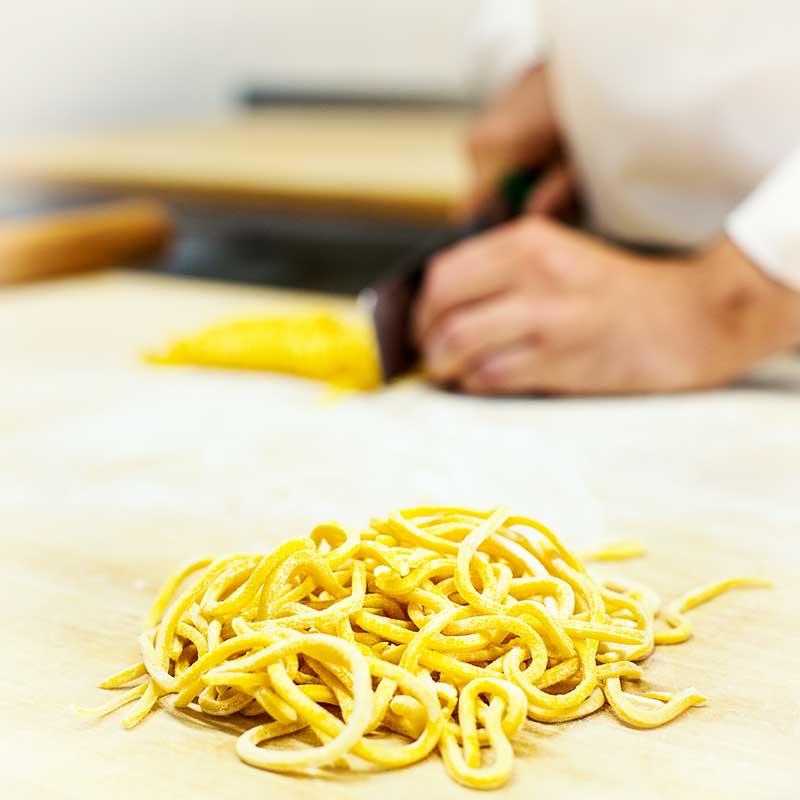
Spaghetti all’Amatriciana became sadly popular again after the tragic earthquake of 2016 that destroyed the town of Amatrice. Even if they are considered a typical Roman dish, they originated from Abruzzo because Amatrice was in the province of L’Aquila up to 1927, when it became part of the province of Rieti, in Lazio. They are simple and tasty, flavored with guanciale, pecorino and tomato (in Rome, onion is added, too).
Arrosticini! What a mouthwatering word! They are a typical shepherd’s dish of the area east of the Gran Sasso and the legend says they were created by two shepherds who didn’t want to waste anything of their animals, so diced all the leftovers cuts into small cubes and made little meat skewers off them! When they are made by hand, arrosticini still call for small, irregular chunks of lean sheep meat with some chunks of fat between them, all placed on a wooden skewer of about 20 centimeters (8 inches), known locally as li cippe or li cippitill.
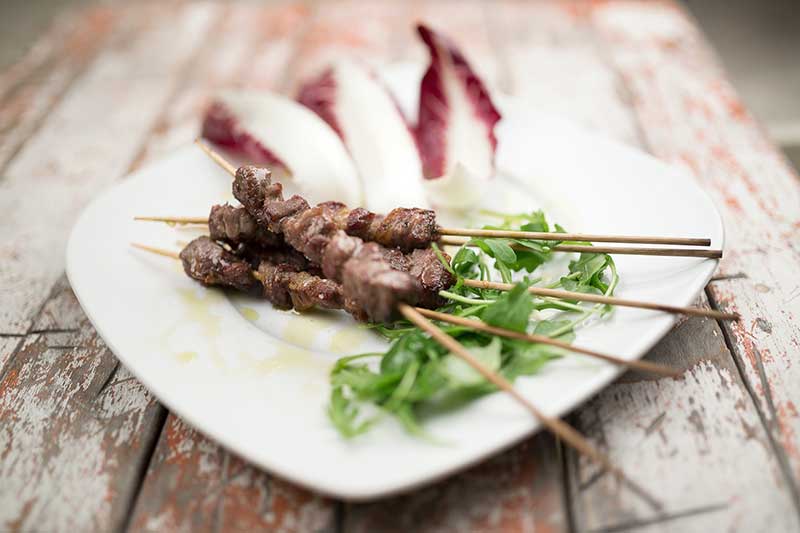
Savory marinated seasoned arrosticini from Abruzzo © Lussoadv | Dreamstime.com
However, the perfect arrosticino is made by the way it’s cooked, by the charcoal used, which has to be elongated in shape, by temperature and of course by the chef’s own skills. Without forgetting the wine, which must be a Montepulciano DOC!
At times, the harsh mountains that dominate the territory make us forget Abruzzo is also a land of sea and of fish. You can’t say you tried Abruzzese cuisine if you haven’t tried these two dishes, with some red vinegar on top: fish brodetto and the scapece alla Vastese, a delicious fish from the Adriatic sea, similar to dogfish, cooked with saffron.
But Abruzzo is also known for its production of cold cuts and cheeses. A local pig breed, the Nero d’Abruzzo, has been reintroduced, after having almost disappeared. Aquilano salami, sausage in oil, ventricina Termana, liver sausage and Campotosto mortadella are all cold cuts representative of the Abruzzese territory, that sport ancient origins and are prepared, still today, with the same traditional methods.
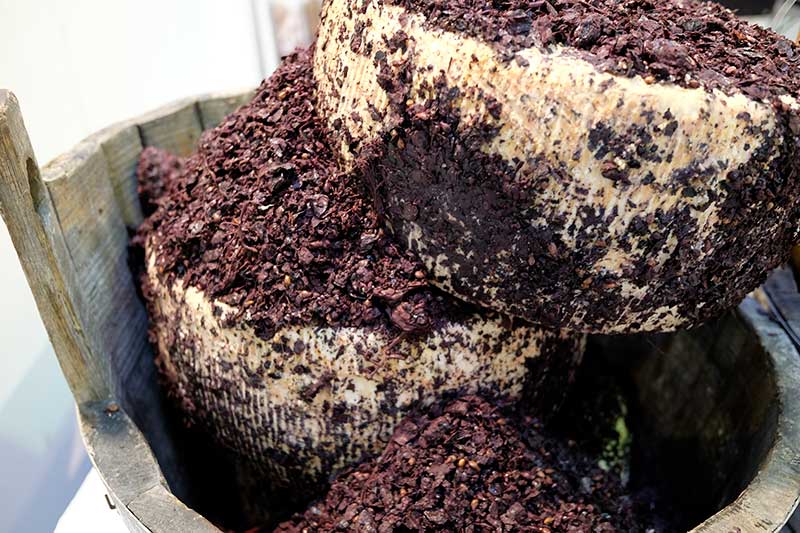
Traditional pecorino cheese in abruzzo © Roberto Pangiarella | Dreamstime.com
Abruzzo’s cheeses are especially synonym with various types of pecorino produced in the region’s many valleys, but if you really want to try something different, then look no further than the cacio marcetto, a cheese similar to the more famous casu marzu from Sardinia. It is a pecorino fermented with the use of bachi da latte, worms that make the cheese creamy to the point it can be used as a spread.
As usual, I’d like to propose to you some typical dishes from the region. Here’s a recipe, then, for spaghetti alla chitarra con le pallottine.
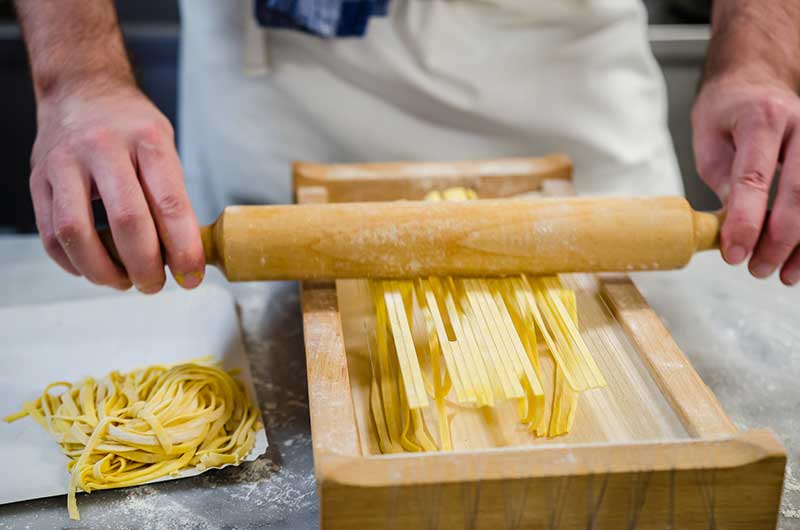
For the spaghetti
•2 1/2 cups of semolina flour
•3 eggs
•1 tbsp of extra virgin olive oil
For the pallottine
•1 lbs of ground meat (there are several recipes: some call for a mix of beef, veal and mutton, others only for beef and mutton: personally, I used lamb, to make their flavor stronger)
•3 tbsps of grated pecorino
•1 egg
•a pinch of nutmeg
•a pinch of salt
For the sauce
•1 stalk of celery
•1 carrot, finely chopped
•1 medium onion, finely chopped
•1 1/2 cups of tomato sauce
•extra virgin olive oil
•Salt
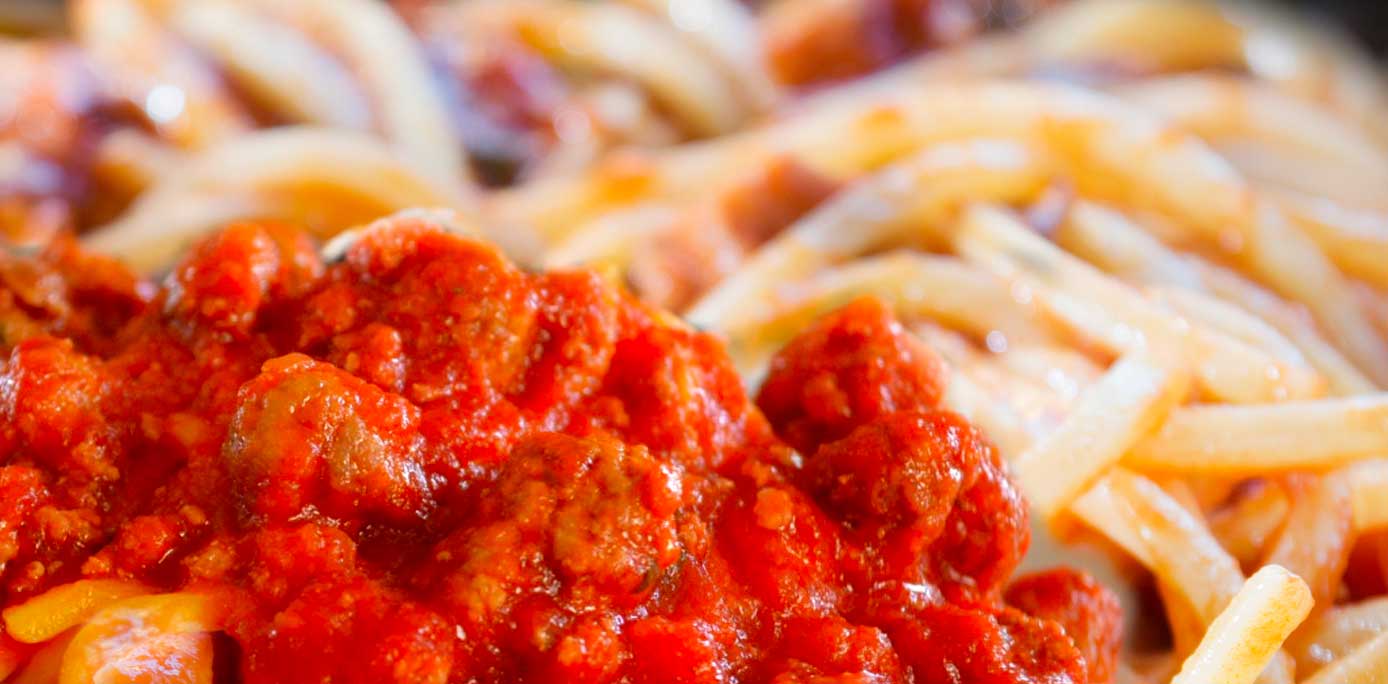
Pallottine are small meatballs, used in the sauce for Abruzzo’s spaghetti alla chitarra © Marazem | Dreamstime.com
For the pasta
Sieve the flour into a bowl and add the eggs in the centre. With a fork, mix them together, until the eggs are absorbed.
Move the dough on a flat surface and start kneading it until it gets smooth and firm (about 10 minutes of energetic work). If the dough were too dry, add some drops of water or, if it were too wet, some extra flour.
Let it rest wrapped in cling film for at least 30 minutes.
Using a pasta machine, roll the dough until it is a couple of millimeters thick, then place it on the “chitarra” and press it by passing a rolling pin on it until the strings cut the dough into spaghetti.
For the sauce
Sauté on a very low fire all the thinly sliced vegetables. When they are soft, add the tomato sauce and salt and let it all simmer for about 15 minutes, or until the sauce is thick and no longer watery.
For the pallottine
Mix the chosen meats with the salt, the nutmeg, the grated pecorino and the egg. Make small meatballs, not bigger than 1/2 inch in diameter. Cook in some olive oil until they are golden (7/8 minutes), then add them to the tomato sauce.
In the meanwhile, cook the pasta in salted boiling water. Drain it and pour it in the sauce.
Stir and add pecorino.
You should try this delicacy with a glass or two of Montepulciano d’Abruzzo!
Chef Varinia Cappelletti is the author of From My Florentine Kitchen and Tiramisu Amore Mio, chefvary.com
Fino al 1963, l’orgogliosa terra d’Abruzzo non era ancora una regione a sé stante ma conviveva con il Molise anche se già Federico di Svevia, nel 1233, aveva dato vita al Giustiziere d’Abruzzo identificandone così il territorio. l’Abruzzo poi diventa parte del regno Borbonico e rimarrà tale fino a quando, non senza opporre resistenza, verrà annesso al Regno d’Italia. In questo periodo il fenomeno del brigantaggio a sostegno del regno
Borbonico divenne particolarmente forte.
Geograficamente si colloca in centro Italia, ma culturalmente ha le caratteristiche tipiche di una regione del sud.
In pratica potremmo definire l’Abruzzo un “parco nazionale” visto che possiede ben il 36% del totale delle aree protette d’Europa, oltre che 23 annoverazioni nella lista dei borghi più belli d’Italia, con i sui castelli e roccaforti, abbazie, conventi, monasteri, santuari, eremi e siti archeologici.
Le vie della transumanza naturale, i tratturi, per il sostentamento dei Sanniti, caratterizzavano il territorio dal VI secolo AC, e vennero regolamentati a partire dal II secolo DC dalle leggi romane che vi imposero dei dazi.
Da una ventina di anni è nato un progetto, le” Vie del Tratturo” proprio allo scopo di riqualificare di questi antichissimi percorsi.
Tra il 1860 e la fine della Seconda Guerra Mondiale, circa 1.300.000 abruzzesi emigrarono in nord America e Australia. Nei secoli precedenti però la terra d’Abruzzo e’ stata essa stessa terra di immigrati: ha infatti accolto numerose popolazioni che l’avevano scelta come nuova residenza. Difatti, a partire dal XVI secolo si insediarono nella zona di
Terni e Pescara popolazioni serbo croate ed albanesi di cui sopravvive solo qualche traccia nel dialetto parlato a Villa Badessa, oltre che il rito ortodosso.
La sua particolare conformazione geografica, alte montagne che diradano in colline e poi sul mare in una superficie molto ristretta, hanno dato vita ad una serie di microclimi che influenzano l’economia e naturalmente la cucina!
Nonostante il territorio ed il terreno stesso non siano propriamente tra i più adatti, l’agricoltura rimane una fonte importantissima, tanto da offrire produzioni che hanno meritato i marchi IGP, DOP e PAT. Tra i prodotti tipici troviamo lo zafferano dell’Aquila, la patata del Fucino, l’aglio rosso di Sulmona, il farro d’Abruzzo.
L’aglio rosso di Sulmona e’ una specie rara e pregiata coltivata da secoli, esclusivamente nella Conca Peligna nei pressi appunto di Sulmona.
Oltre alle sue caratteristiche medicamentose, si evidenzia per il suo colore rosato, per il suo sapore inteso e per la lunga capacita di conservazione.
Si sposa benissimo sia con sapori di terra come le patate o gli spaghetti, sia con i sapori di mare come i gamberi.
Altro fiore all’occhiello abruzzese è “Lo zafferano dell’Aquila.” Prodotto a denominazione di origine protetta dal 2005, proveniente esclusivamente dall’Altopiano di Navelli, e’ definito il miglior zafferano del mondo sia per la maggiore bellezza e lunghezza degli stimmi che per il potere aromatico superiore, dovuto all’elevato contenuto di safranale (La produzione di un chilogrammo di zafferano richiede circa 200.000 fiori e 500 ore di lavoro!).
Importantissima e’ la tradizione vinicola con le sue produzioni di notevoli vini come il Montepulciano d’Abruzzo, il Trebbiano d’Abruzzo e il
Pecorino.
La cucina abruzzese, e’ incredibilmente varia e sopratutto a causa dell’isolamento della regione, si e’ mantenuta una notevole autenticità.
I piatti simbolo dell’Abruzzo sono senza ombra di dubbio gli spaghetti alla chitarra con “pallottine,” gli spaghetti all’amatriciana, gli arrosticini, la pecora alla cottora, le patate maritate e naturalmente i confetti di Sulmona.
Gli spaghetti alla chitarra abruzzesi (abruzzesi, perché sono una specialità tipica delle regioni del sud d’Italia) si fanno utilizzando uno strumento detto appunto chitarra, una sorta di cetra sopra la quale viene appoggiata la pasta all’uovo e semola le cui corde, sotto la pressione esercitata con un mattarello, taglieranno l’impasto in tanti spaghetti dalla sezione quadrata. A Teramo si condiscono le pallottine, piccolissime polpette di carne cotte nel pomodoro.
Gli spaghetti all’Amatriciana sono tornati alla ribalta, purtroppo, dopo il catastrofico terremoto che ha colpito e distrutto la cittadina di Amatrice nel 2016. Benché siano considerati un piatto tipico della cucina romana, traggono la loro origine proprio da Amatrice che oggi si trova in territorio romano (precisamente in provincia di Rieti) ma che, fino al 1927 era nella provincia dell’Aquila, per cui a tutti gli effetti Abruzzo.
Semplici e saporiti gli ingredienti, guanciale pecorino e pomodoro (a Roma aggiungono anche la cipolla), che hanno reso questo condimento popolare in tutto il mondo.
Gli arrosticini: solo la parola fa venire l’acquolina in bocca! Pietanza “pastorale” tipica della zona est del Gran Sasso, la leggenda narra sia stata inventata da due pastori che pur di non sprecare le parti considerante immangiabili dell’animale, le ridussero in piccolissimi bocconcini che infilarono in un bastoncino di legno, facendone degli spiedini!
Le produzioni manuali ancora oggi prevedono tagli irregolari di carne rigorosamente di pecora magra intervallata da grasso, infilati appunto in spiedini di legno dalla lunghezza di circa 20cm (in dialetto detti li cippe oppure li cippitill) e cotti sulla speciale brace.
La riuscita dell’arrostincino dipende dalla cottura, dalla brace che deve essere di forma allungata, dalla temperatura e naturalmente, come in tutte le cose, dall’abilita’ dello chef e…dal vino servito: rigorosamente
Montepulciano DOC!
Vero e’ che le aspre montagne che dominano il territorio fanno quasi dimenticare la costa e sopratutto il pescato che, benché non sia fonte principale dell’economia locale, ha un ruolo piuttosto importante.
Non si può dire di avere gustato la cucina abruzzese se non si sono assaggiati i due più famosi piatti con l’aggiunta di aceto rosso: il brodetto di pesce e lo scapece alla vastese, miglior pesce dell’Adriatico, simile alla razza e al palombo, cotto con l’aggiunta di fili di zafferano.
Oltre alle pietanze, l’Abruzzo vanta produzioni di salumi e formaggi.
Nel territorio e’ stato reintrodotta una razza autoctona di suino, il “nero d’Abruzzo,” razza di nicchia che era quasi scomparsa.
Salame Aquilano, Salsiccia di maiale sott’olio, ventricina ternana, salsiccia di fegato e mortadella di Campotosto sono salumi rappresentativi del territorio, alcuni dei quali hanno origini antichissime e che, ancora oggi, vengono preparati con sistemi artigianali.
I formaggi d’Abruzzo naturalmente sono rappresentati dai pecorini che da tempo immemorabile si producono nelle valli, ma si deve assolutamente annoverare un formaggio davvero unico: il “cacio marcetto” simile al più famoso “casu marzu” sardo. Si tratta di un pecorino che viene fatto fermentare utilizzando i “bachi da latte” che rendono questo formaggio cremoso al punto da poter essere spalmato.
Come sempre vi propongo l’idea di concludere con la preparazione di un piatto abruzzese: spaghetti alla chitarra con le pallottine.
Per la pasta
•300 gr di semola rimacinata
•3 uova
•un cucchiaio di olio
Per le pallottine
•300gr di carne macinata (ci sono varie ricette che possono prevedere misto manzo, vitello e castrato oppure solo manzo e castrato…) Io personalmente le ho fatte di agnello per dare un’impronta ancora più decisa.
•30 gr di pecorino
•1 uovo
•un pizzico di noce moscata
•un pizzico di sale
Per la salsa
•1 gambo di sedano tagliato molto finemente
•1 carota tagliata molto finemente
•1 cipolla media tagliata molto finemente
•300 gr di passata di pomodoro piuttosto densa
•olio quanto basta perché le verdure siano unte
•sale in base al vostro palato
Preparare la pasta
Mettere la farina in una ciotola (magari setacciarla in anticipo) e aggiungere al centro le uova.
Incorporare le uova alla farina aiutandosi con una forchetta. Quando la farina avrà assorbito più meno tutta la parte umida (le uova), trasferire l’impasto su una spianatoia ed iniziare a lavorare la pasta fino acquando non sarà diventata compatta e liscia (circa 10 minuti di lavoro energico).
Se la pasta risultasse troppo secca, aggiungere qualche goccia di acqua; se fosse troppo appiccicosa un po’ di farina.
Lasciare riposare la pasta avvolta in una pellicola per almeno 30 minuti.
Stendere con una macchina per pasta (spessore di qualche millimetro).
Appoggiare la sfoglia sull’apposita “chitarra” e con un mattarello fare pressione fino a quando le corde non taglieranno gli spaghetti.
Preparare la salsa
Fare soffriggere a fuoco molto basso le verdure tagliate finemente. Quando saranno morbide aggiungere il pomodoro, il sale e fare sobbollire per circa 15 minuti, o fino a quando la salsa non risulterà densa e priva di acqua.
Preparare le pallottine
Impastare la o le carni scelte con sale, noce moscata, pecorino grattato e l’uovo.
Formare delle palline non più grandi di un centimetro di diametro (una biglia).
Cuocere con un po’ di olio fino a quando saranno dorate (circa 7/8 minuti).
Aggiungere alla salsa di pomodoro.
Nel frattempo, fare cuocere la pasta in abbondante acqua bollente e salata, scolare e versare gli spaghetti nella salsa.
Mescolare, aggiungere pecorino e servire immediatamente.
Accompagnare questa delizia con un bicchiere …o due di Montepulciano D’Abruzzo.












